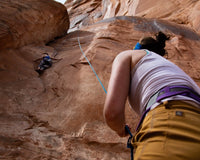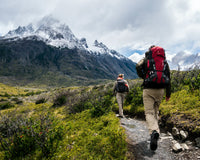Effective navigation is crucial for a safe and enjoyable outdoor experience. Whether you're hiking, camping, or backpacking, knowing how to navigate unfamiliar terrain can prevent you from getting lost and help you confidently reach your destination. In this Defiance Gear Navigation Guide, we'll share essential navigation skills, tools, and techniques that will enhance your outdoor adventures.
Understanding Basic Navigation Tools
There are several navigation tools that can help you stay on track during your outdoor activities:
- Map: A topographic map provides detailed information about the terrain, including elevation, landmarks, and trails. Familiarize yourself with map symbols, scales, and contour lines to accurately interpret the information.
- Compass: A compass allows you to determine your direction of travel by aligning with the Earth's magnetic field. Learn how to use a compass in conjunction with a map to orient yourself and navigate effectively.
- GPS Device: A GPS (Global Positioning System) device uses satellite signals to determine your precise location, direction, and speed. Many GPS devices also include preloaded maps and other navigation features.
- Smartphone Apps: Numerous navigation apps are available for smartphones, offering GPS functionality, downloadable maps, and other useful features. Keep in mind that relying solely on your phone can be risky, as it may run out of battery or lose signal in remote areas.
Basic Navigation Techniques
Improve your navigation skills by mastering these fundamental techniques:
- Orienting Your Map: Align your map with the terrain by placing your compass on the map and rotating both until the compass needle points to magnetic north.
- Taking a Bearing: Determine the direction of travel from your current location to your destination by placing your compass on the map, aligning the edge with the two points, and rotating the compass housing until the orienting lines are parallel to the map's north-south grid lines.
- Following a Bearing: Hold your compass level and turn your body until the compass needle aligns with the orienting arrow, then walk in the direction indicated by the direction-of-travel arrow.
- Identifying Landmarks: Use prominent features such as hills, rivers, or buildings to confirm your location and track your progress on the map.
- Estimating Distance: Develop a sense of distance by practicing pace counting or using time-based estimates, and compare your estimations with the map's scale.
Navigating in Challenging Conditions
Navigating in difficult conditions, such as low visibility, dense vegetation, or featureless terrain, can be challenging. In these situations, consider using advanced navigation techniques such as:
- Aiming Off: Deliberately set a course slightly off your intended target to reach a linear feature, such as a trail or river, that will guide you to your destination.
- Handrails: Use linear features like trails, ridges, or rivers as "handrails" to guide you along your route.
- Catch Features: Identify features like cliffs or lakes that will "catch" you if you've gone too ar, providing a clear indication that you need to change direction.
- Dead Reckoning: Use your map and compass to estimate your position by continuously updating your location based on your direction of travel and distance covered.
- Triangulation: If you're uncertain about your location, use a map and compass to triangulate your position by taking bearings from at least two known landmarks and identifying where the bearings intersect on the map.
Enhancing Your Navigation Skills
Practice is essential for developing proficient navigation skills. Consider these strategies to improve your abilities:
- Take a Course: Participate in a navigation course or workshop to learn from experienced instructors and gain hands-on practice.
- Practice Locally: Test your navigation skills in familiar surroundings, such as local parks or hiking trails, before venturing into more challenging environments.
- Join a Group: Connect with other outdoor enthusiasts through clubs or meetups to share navigation tips, knowledge, and experiences.
- Stay Updated: Regularly review your navigation skills and stay informed about new tools, techniques, and technologies.
Conclusion
Mastering navigation skills is essential for safe and enjoyable outdoor adventures. By understanding basic navigation tools, practicing essential techniques, and staying prepared for challenging conditions, you'll gain confidence in your abilities and enhance your overall outdoor experience. Visit Defiance Gear's Essential Outdoor, Hiking, and Camping Gear Questions Answered for more outdoor gear recommendations, tips, and insights to help you make the most of your outdoor experiences.









